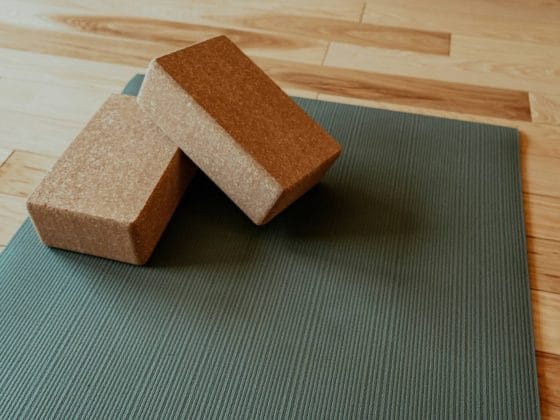If you’re thinking about teaching online yoga classes, there are several things to consider before jumping into the deep end. Let’s break it down.
First, what kind of teacher do you want to be? In other words what type of yoga would you like to teach – do you want to make youtube videos, do live classes, make an app, be a private yoga teacher, have your own online studio?
Second, how will you market yourself? Do you want to offer training courses privately on your own website, do you want to promote yourself through social media or upload your classes directly to an online yoga studio like YogaGlo?
Third, what kind of revenue streams would you like to pursue? Do you want to focus on hosting webinars, youtube, sell products, do affiliate marketing, These options require quite a few upfront investments, however, which could mean less money?
Each option has pros and cons. And none of them are mutually exclusive. In fact, much of it can overlap, but by asking questions in different ways you will have a better idea in of your vision.
Tips for New Online Yoga Teachers
1. Get an Online Yoga Certification
While a yoga certification is not needed to become a teacher, it is something you likely will want to consider. Without having gone through at least some form of formal training, it would be difficult to be able to put all of the pieces together. Knowing how to sequence a class, knowing the cues, and understanding adjustments all take a bit of time and practice.
There are a ton of online yoga certifications to choose from, especially since 2020 when the world went online. Doing an online course would also be a good stepping stone to see how others are using different online platforms as well. While there are both pros and cons of doing an online teacher training – one thing is for sure, you can’t beat the price!
2. Be Prepared & Make a Gameplan
As exciting as it may be, I strongly advise against starting out teaching online yoga classes without having a solid plan in place. You could easily find yourself spending hours every day doing something you don’t enjoy just because you think you’re supposed to. If you’ve never taught yoga before, you’ll probably feel a bit overwhelmed in trying to soak up all of the information, and then plan your business and execute. It’s a tall order for anyone.
First off, learn everything you can. That means, reading, asking questions to friends or teachers who already know how and what it takes to be an instructor, emailing influencers, leave comments on online communities and forums. Essentially it’s just about starting to engage in the conversation. Just start. Anywhere.
And while there is certainly value in learning everything you can about how to teach yoga online, it’s important to remember that you’re not necessarily required to know everything about the practice before you start. Trial by fire actually is the best way to learn.
3. Pick a Niche
I suggest getting clear on what type of yoga you’d like to teach, whether it’s Vinyasa Flow, Hatha Yoga, Restorative Yoga, Yin Yoga, Meditation, etc., and then deciding where you see yourself teaching.
Well before you pick a platform it’s a good idea to have a niche. Yoga is too broad, so it’s best to narrow it down so that you have a better chance of finding your ideal customer. Being hyper-focused also gives you a way to differentiate between what you are doing and everyone else.

4. Go Online
Once you figure out what you want to teach, take some time to research the different ways people teach those styles of yoga online. There are many options — from virtual studios to YouTube channels to apps — and each one offers unique benefits and challenges. If you would like a breakdown of all the different yoga platforms out there, here is a great resource.
In today’s world, there are many different ways to market yourself as a yoga instructor. You do not need to just pick one marketing channel or online platform, most people who are looking to start a business online recognize that you do not want to put all of your eggs in one basket. Diversification is key, though it always takes a ton of time. So be patient, it does not all happen overnight.
Start with what you already know and go from there.
5. Make a Website
A website is a great place to start because it provides a lot of information about you, your classes, and your goals. Your website is also where people go to find out more about your brand, your background, and a place where they can get to understand what you are all about. Having a pro-looking website is always a good place to start.
There are lots of options out there when it comes to creating a website, and choosing the right one depends largely on what your plans will be with it. For example, if you just want to post photos of your classes, you could choose a simple WordPress theme. Or, if you want to offer video tutorials, you might consider purchasing a premium theme that includes video capabilities. But anything beyond that and you will likely need to get a developer who can help you put together any private member areas, gated paywalls, live webinars, yoga app, training courses etc… No need to get ahead of yourself though, all those things come as time goes on. The first thing first is to start small, and go from there.
6. Just start!
The last step is to simply start. You don’t have to wait until you have a fully developed plan. Start posting videos, sharing articles, and starting conversations with other yogis. The goal is to build up a following over time, but even if you only have 10 followers at the beginning, that’s still 10 people who are interested in what you have to say. It may seem daunting at first, but once you start getting feedback from others, you’ll see how much easier it becomes. And, Yes even if you are 50, you can start. The only thing stopping you is – YOU!
So there you have it, 6 tips to teaching yoga online. I hope these tips help you get started, and I wish you the very best of luck!



